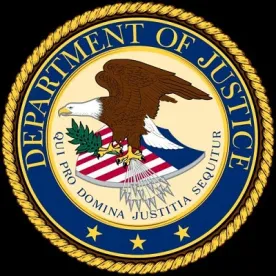The US Sentencing Guidelines permit reductions of criminal penalties based on a business organization’s inability to pay criminal fines, but were unclear about how it would make such determinations. An October 8 memorandum issued by the Assistant Attorney General for the Criminal Division of the DOJ helps to clarify the determination process.
IN DEPTH
On October 8, 2019, Brian A. Benczkowski, the Assistant Attorney General for the Criminal Division of the Department of Justice (DOJ), issued a memorandum regarding inability-to-pay agreements for business organizations. The memorandum, entitled “Evaluating a Business Organization’s Inability to Pay a Criminal Fine or Criminal Monetary Penalty,” clarifies what factors DOJ’s Criminal Division considers when deciding whether to reduce criminal penalties based on a business organization’s inability to pay criminal fines. While the US Sentencing Guidelines already permit reductions under such circumstances, the Benczkowski memorandum clarifies DOJ’s position on certain things that were previously unclear in the Guidelines.
According to the memorandum, DOJ will continue to place the burden on business organizations to establish their inability to pay. To be considered, a company must complete DOJ’s Inability-to-Pay Questionnaire and respond to any follow-up inquiries. The Questionnaire requires that the company provide specific information, designed to assist Criminal Division lawyers in determining the company’s current assets, liabilities, anticipated cash flows and working capital needs. This information includes:
-
recent cash flow projections;
-
operating budgets and projections of future profitability;
-
capital budgets and projections of annual capital expenditures;
-
proposed changes in financing or capital structure;
-
acquisition or divestiture plans;
-
restructuring plans;
-
claims to insurers;
-
related or affiliated party transactions;
-
encumbered assets; and
-
liens on company assets.
As a note of interest, the questionnaire does not appear to include unencumbered assets. The failure to consider such assets may prove critical to companies in these circumstances. The memorandum emphasizes four factors (three of which are used to determine insolvency for fraudulent transfer purposes under state law in many jurisdictions) that Criminal Division lawyers must consider when deciding whether a business organization has demonstrated an inability to pay:
-
The Company’s Current Financial Condition. In assessing the company’s current financial condition, DOJ will also scrutinize recent transactions. For example, if the company recently issued significant dividends, loans or other compensation to company ownership or management, the Criminal Division may take that into account when determining whether to reduce the company’s criminal fine.
-
Alternative Sources of Capital. DOJ will also consider whether the company will be able to raise capital after the issuance of the fine, or whether the company is indemnified.
-
Collateral Consequences. In addition, DOJ will consider whether the imposition of the fine will affect an organization’s ability to fund pension obligations or comply with federal laws. DOJ may also consider whether the fine will lead to layoffs, product shortages or significant disruptions in the competition of a market. In making this assessment, however, DOJ will not consider the adverse impact a fine may have on a company’s future growth, opportunities, dividends, executive compensation and bonuses, or hiring and retention.
-
Victim Restitution Considerations. Finally, DOJ will look at whether the fine will affect an organization’s ability to make restitutions for crime victims.
Importantly, however, prosecutors still have significant flexibility. Indeed, the memorandum instructs that prosecutors “may, where appropriate, make an adjustment to a proposed criminal fine or monetary penalty based on the existence of significant adverse collateral consequences that, while severe, may not necessarily threaten the continued viability of the organization.” In these circumstances, prosecutors can adjust a penalty in an amount “not more than necessary” to avoid causing that collateral consequence.
The memorandum only applies to criminal fines, and only when the Criminal Division and defendants have reached “an agreement as to both the form of a corporate criminal resolution . . . and the monetary penalty that is appropriate based on the law and facts, irrespective of inability to pay considerations.” The memorandum, therefore, does not apply to ability-to-pay settlements in civil cases. Whether DOJ intends to issue guidance on civil settlements remains unclear. Also important to note is that such fines may not be discharged in bankruptcy, depending on the circumstances leading to the fine.
Practice Note
While the US Sentencing Guidelines have allowed reduced fines for corporate defendants that are genuinely unable to pay, it was unclear how DOJ would make such determinations. While the company retains the burden to seek a reduction in a criminal fine, the October 8 memorandum now provides a roadmap for the factors DOJ will consider in agreeing to such a reduction.








 />i
/>i
